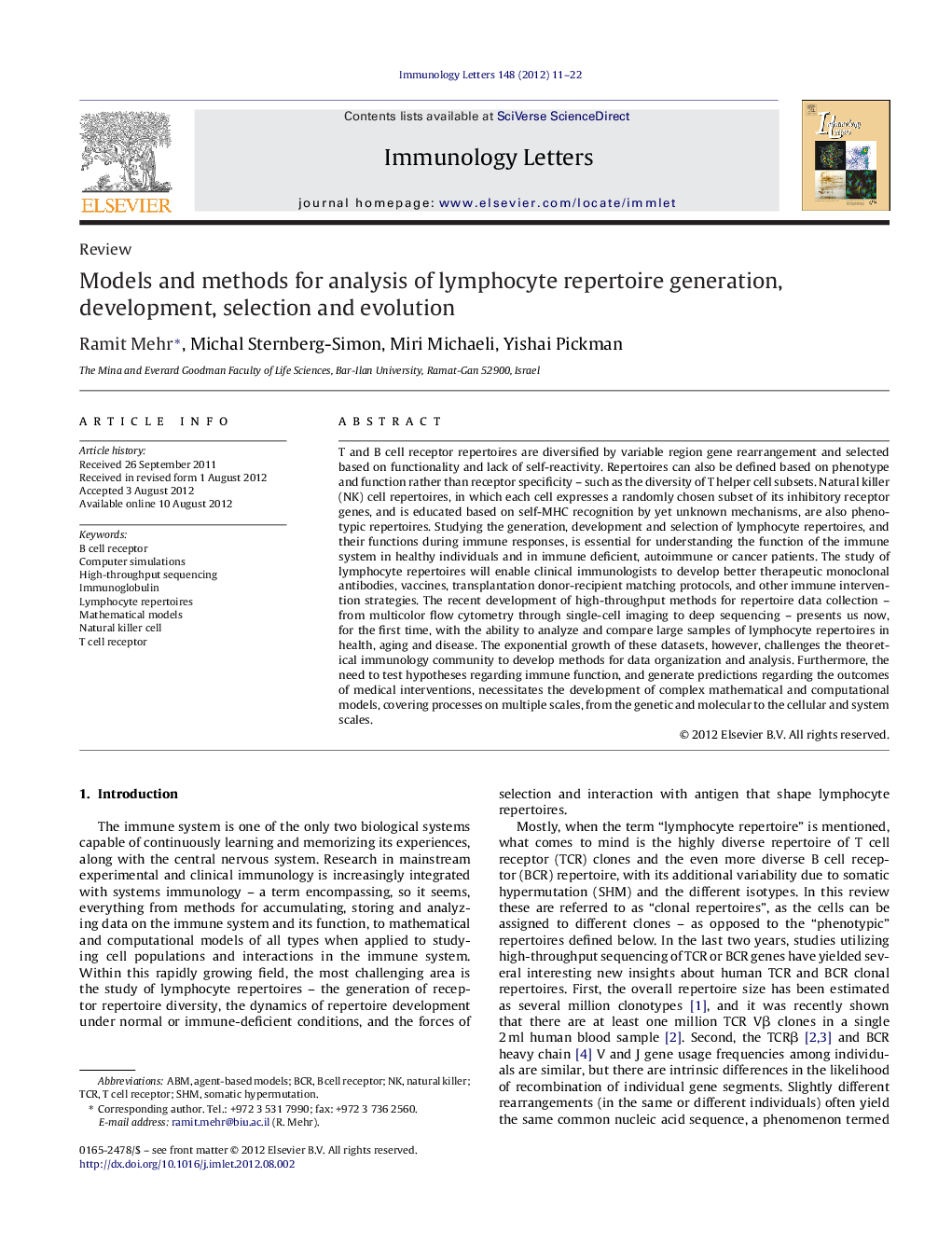| کد مقاله | کد نشریه | سال انتشار | مقاله انگلیسی | نسخه تمام متن |
|---|---|---|---|---|
| 3355611 | 1217194 | 2012 | 12 صفحه PDF | دانلود رایگان |

T and B cell receptor repertoires are diversified by variable region gene rearrangement and selected based on functionality and lack of self-reactivity. Repertoires can also be defined based on phenotype and function rather than receptor specificity – such as the diversity of T helper cell subsets. Natural killer (NK) cell repertoires, in which each cell expresses a randomly chosen subset of its inhibitory receptor genes, and is educated based on self-MHC recognition by yet unknown mechanisms, are also phenotypic repertoires. Studying the generation, development and selection of lymphocyte repertoires, and their functions during immune responses, is essential for understanding the function of the immune system in healthy individuals and in immune deficient, autoimmune or cancer patients. The study of lymphocyte repertoires will enable clinical immunologists to develop better therapeutic monoclonal antibodies, vaccines, transplantation donor-recipient matching protocols, and other immune intervention strategies. The recent development of high-throughput methods for repertoire data collection – from multicolor flow cytometry through single-cell imaging to deep sequencing – presents us now, for the first time, with the ability to analyze and compare large samples of lymphocyte repertoires in health, aging and disease. The exponential growth of these datasets, however, challenges the theoretical immunology community to develop methods for data organization and analysis. Furthermore, the need to test hypotheses regarding immune function, and generate predictions regarding the outcomes of medical interventions, necessitates the development of complex mathematical and computational models, covering processes on multiple scales, from the genetic and molecular to the cellular and system scales.
► Lymphocyte repertoires may be defined as sets of clones or phenotypic subsets.
► High-throughput phenotyping or sequencing yield complex repertoire data.
► We need quantitative repertoire data processing, analysis and comparison tools, and detailed predictive models of lymphocyte repertoire development and function.
Journal: Immunology Letters - Volume 148, Issue 1, November–December 2012, Pages 11–22